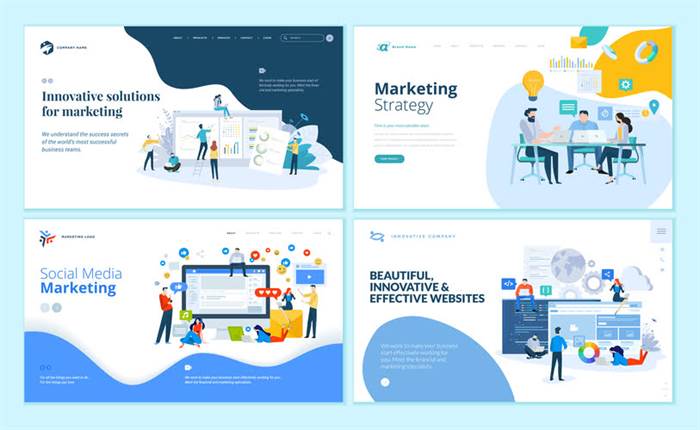Developers will typically use multiple tools, programming environments, and languages (C++, PHP, Python, and others), all of which will comply with the project specifications and requirements outlined in the SRS document. This phase of the system development life cycle is often split into different sub-stages, especially if a microservice or miniservice architecture, in which development is broken into separate modules, is chosen. If this is done in the production environment, this is usually done by a Quality Assurance professional.
In addition, testing allows users to identify defects before the system is deployed. A testing environment that simulates the actual use of the system should be used. At this phase, there is a risk of “scope creep” such that system enhancements that go beyond the charter and project management plan may be identified. These potential enhancements should be logged for future consideration but not acted upon immediately. The project manager plays a central role in this prioritization process. The end goal of this phase is for a system that is ready for implementation.
Developers write code and build the app according to the finalized requirements and specification documents. Ready to maximize the efficiency of your systems development life cycle? If you’re a developer or project manager, an understanding of the most up-to-date SDLC methodologies is a powerful tool. It empowers you to speed up the development process, cut costs, leverage the full creative capacity of your team, and more. The SDLC process consists of seven phases, including planning, design, testing, and maintenance.

It is similar to the Waterfall model with the addition of comprehensive parallel testing during the early stages of the SDLC process. Typically, each stage must be completed before the next one can begin, and extensive documentation is required to ensure that all tasks are completed before moving on to the next stage. This is to ensure effective communication between teams working apart at different stages. Once the product is ready to go, it’s time to make it available to its end users and deploy it to the production environment. The correct use of the System Development Life Cycle has a large number of benefits.
Failure to take into account the needs of customers and all users and stakeholders can result in a poor understanding of the system requirements at the outset. SDLC done right can allow the highest level of management control and documentation. All parties agree on the goal upfront and see a clear plan for arriving at that goal. An extension of the waterfall model, this SDLC methodology tests at each stage of development. At this stage, the goal is to deploy the software to the production environment so users can start using the product. However, many organizations choose to move the product through different deployment environments such as a testing or staging environment.

With that in mind, Intellectsoft’s best experts have created a complete guide to the system development life cycle. You’ll learn about its core meaning and phases, major software engineering methodologies, and the most important benefits it can provide during project development. Central to the creation of a new information system is the analysis of the public health agency’s business processes that the information system must support.
Too much time spent attending meetings, seeking approval, etc. which lead to additional cost and time to the schedule. Take time to record everything, which leads to additional cost and time to the schedule. This allows any stakeholders to safely play with the product before releasing it to the market.
Each SDLC model offers a unique process for your team’s various project challenges. The project’s specifications and intended results significantly influence which model to use. For example, the waterfall model works best for projects where your team has no or limited access to customers to provide constant feedback. However, the Agile model’s flexibility is preferred for complex projects with constantly changing requirements.
In other words, the team should determine the feasibility of the project and how they can implement the project successfully with the lowest risk in mind. This article will explain how SDLC works, dive deeper in each of the phases, and provide you with examples to get a better understanding of each phase. Results of software testing must be documented and approved by the IT Manager and the System Owner. All errors shall be tested after correction to ensure that they have been eliminated as part of the regression testing process and that no new ones have been introduced.

One of the upsides to this model is that developers can create a working version of the project relatively early in their development life cycle, so implement the changes are often less expensive. New versions of a software project are produced at the end “systems development life cycle” of each phase to catch potential errors and allow developers to constantly improve the end product by the time it is ready for market. In theory, all of the prior planning and outlined should make the actual development phase relatively straightforward.
In contrast, the waterfall model may be more appropriate for low-risk projects where requirements are well understood and potential bugs can be identified more easily. With its customizable spreadsheet interface and powerful collaboration features, Smartsheet allows for streamlined project and process management. Use Smartsheet’s SDLC with Gantt template to get started quickly, and help manage the planning, development, testing, and deployment stages of system development. Create a timeline with milestones and dependencies to track progress, and set up automated alerts to notify you as anything changes. Share your plan with your team and key stakeholders to provide visibility, and assign tasks to individuals to ensure nothing slips through the cracks. The importance of the software development cycle comes first in any software development process.
There is an increased interest in system security at all levels of the life cycle, that include the elements of confidentiality, information availability, the integrity of the information, overall system protection, and risk mitigation. Aligning the development team and the security team is a best practice that ensures security measures are built into the various phases of the system development life cycle. In addition, governance and regulations have found their way into technology, and stringent requirements for data integrity impact the team developing technology systems. Regulations impact organizations differently, but the most common are Sarbanes-Oxley, COBIT, and HIPAA. Completely defined in 1971, the term originated in the 1960s when mainframe computers filled entire rooms and a pressing need developed to define processes and equipment centered on building large business systems. In those days, teams were small, centralized, and users were ‘less’ demanding.
The system specification represents the technical requirements that will provide overall guidance for system design. Because this document determines all future development, the stage cannot be completed until a conceptual design review has determined that the system specification properly addresses the motivating need. Time and again, it’s been proven that projects https://www.globalcloudteam.com/ not only benefit but thrive by following a standardized set of steps to achieve a final result. Cue the Software Development Life Cycle which allows the team to work on manageable phases until the project is released. By doing so, teams establish a systematic fashion to go about creating new solutions to existing problems in a controlled and standardized manner.